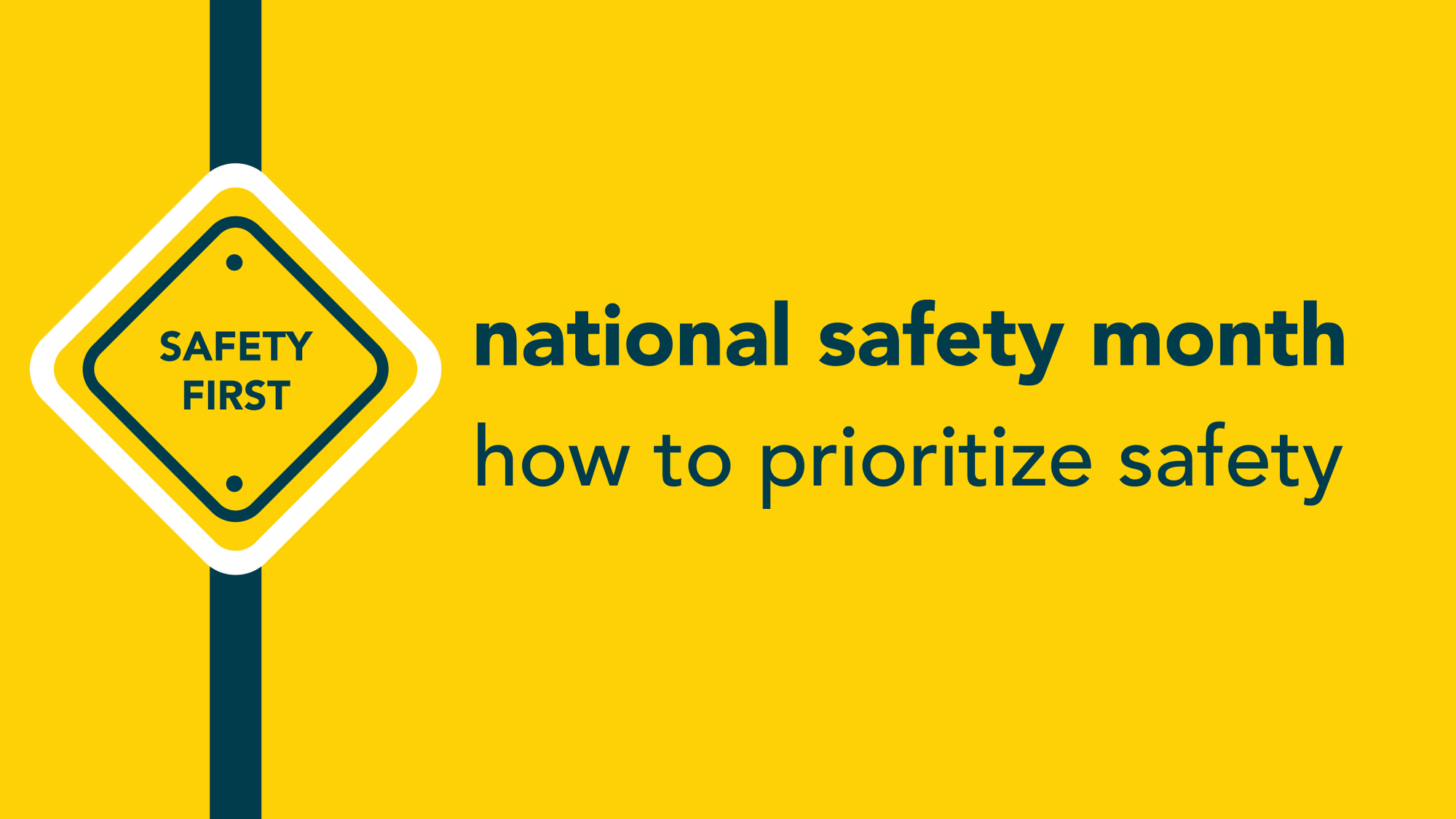National Safety Month is an annual observance dedicated to promoting safety awareness and preventing injuries. It is crucial to emphasize the importance of safety for individuals with disabilities and chronic illnesses, as they may face unique challenges and require specific strategies to ensure their well-being. In this blog post, we will delve into National Safety Month with a focus on empowering individuals with disabilities and chronic illnesses to prioritize safety in various aspects of their lives.
-
Home Safety: Creating a Secure Environment:
- Accessibility modifications: Highlighting the importance of home modifications to ensure accessibility, such as ramps, grab bars, and wider doorways.
- Fall prevention: Providing tips and strategies to reduce the risk of falls, including removing tripping hazards, improving lighting, and installing handrails.
- Emergency preparedness: Offering guidance on creating emergency plans, assembling emergency kits, and considering the unique needs of individuals with disabilities or chronic illnesses during emergencies.
-
Health and Medication Safety: Managing Well-being:
- Medication management: Discussing the importance of proper medication organization, adherence, and communicating with healthcare providers to prevent medication-related issues.
- Personal health monitoring: Encouraging individuals to stay informed about their conditions, track symptoms, and regularly communicate with healthcare professionals.
- Prevention strategies: Sharing safety measures for managing specific health conditions, such as diabetes, asthma, or epilepsy, and providing information on assistive devices or technologies that can enhance safety.
-
Transportation Safety: Navigating the Roads:
- Accessible transportation options: Highlighting accessible public transportation services, paratransit, and resources for individuals with disabilities or mobility limitations.
- Vehicle modifications: Discussing adaptive equipment and modifications that can enhance safety and accessibility for individuals with disabilities.
- Safe travel tips: Providing guidance on securing mobility devices, using seat belts, and advocating for accessible travel accommodations.
-
Online Safety: Navigating the Digital World:
- Privacy and security: Discussing strategies to protect personal information online, secure passwords, and recognize potential online scams or threats.
- Accessible technology: Highlighting assistive technologies and features that enhance digital accessibility for individuals with disabilities, promoting inclusivity and safety online.
- Online community support: Sharing resources and online communities where individuals with disabilities or chronic illnesses can connect, share experiences, and access support.
-
Emergency Preparedness: Ensuring Safety During Crisis:
- Personal emergency plan: Encouraging individuals to develop personalized emergency plans that consider their unique needs, including medication and medical equipment.
- Communication and support networks: Emphasizing the importance of establishing a network of trusted contacts, sharing emergency information, and ensuring effective communication during crises.
- Evacuation preparedness: Providing guidance on evacuation planning, considering accessible routes, transportation, and accommodations in emergency shelters or facilities.
National Safety Month provides an opportunity to highlight the importance of safety for individuals with disabilities and chronic illnesses. By raising awareness, sharing resources, and providing guidance in areas such as home safety, health and medication management, transportation, online safety, and emergency preparedness, we can empower individuals to prioritize safety in their lives. Together, let us create a culture of safety that embraces inclusivity, understanding, and support for all, ensuring that individuals with disabilities and chronic illnesses can lead safe and fulfilling lives.
Here are some additional bullet points to increase home safety for individuals with disabilities and chronic illnesses:
-
Adequate lighting: Ensure that all areas of the home are well-lit, especially hallways, staircases, and entrances, to minimize the risk of trips and falls.
-
Clear pathways: Keep pathways free from clutter, loose rugs, or obstacles that may obstruct movement and increase the risk of accidents.
-
Non-slip surfaces: Use non-slip mats or adhesive strips in the bathroom, kitchen, and other areas prone to moisture to prevent slips and falls.
-
Bathroom safety: Install grab bars near toilets, showers, and bathtubs to provide stability and support. Consider using a shower chair or bench for added safety and convenience.
-
Kitchen safety: Organize frequently used items within reach to minimize the need for reaching or bending. Install safety devices, such as stove knob covers and oven locks, to prevent accidents.
-
Fire safety: Install smoke detectors on every floor of the house and check their batteries regularly. Develop a fire escape plan and ensure that individuals with mobility limitations have accessible routes and assistance if needed.
-
Fall prevention aids: Utilize assistive devices such as walkers, canes, or mobility aids to provide stability and reduce the risk of falls.
-
Medication storage: Store medications securely and out of reach of children, following the instructions provided by healthcare professionals. Consider using pill organizers or reminder apps to ensure proper medication adherence.
-
Emergency contact information: Keep a list of emergency contacts, including doctors, caregivers, and local emergency services, in an easily accessible location.
-
Assistive technology: Explore the use of smart home devices, voice-controlled systems, and other assistive technologies that can enhance safety and accessibility within the home.
-
Accessible furniture and equipment: Choose furniture with appropriate support and stability, such as chairs with armrests and beds with adjustable heights. Use adaptive equipment like reachers or long-handled tools to access items in high or low places.
-
Hazard identification: Regularly assess the home for potential hazards, such as loose carpeting, exposed cords, or uneven flooring, and address them promptly.
-
Emergency backup power: For individuals who rely on medical equipment or assistive devices, consider having backup power options available in case of power outages.
-
Family communication: Establish clear communication protocols among family members or caregivers to ensure prompt assistance in case of emergencies or safety concerns.
-
Professional assessments: Consult with healthcare professionals, occupational therapists, or home safety specialists who can provide personalized recommendations for improving home safety.
Remember, each individual's needs may vary, so it's important to consider specific requirements and consult with professionals to create a home environment that promotes safety and independence.



